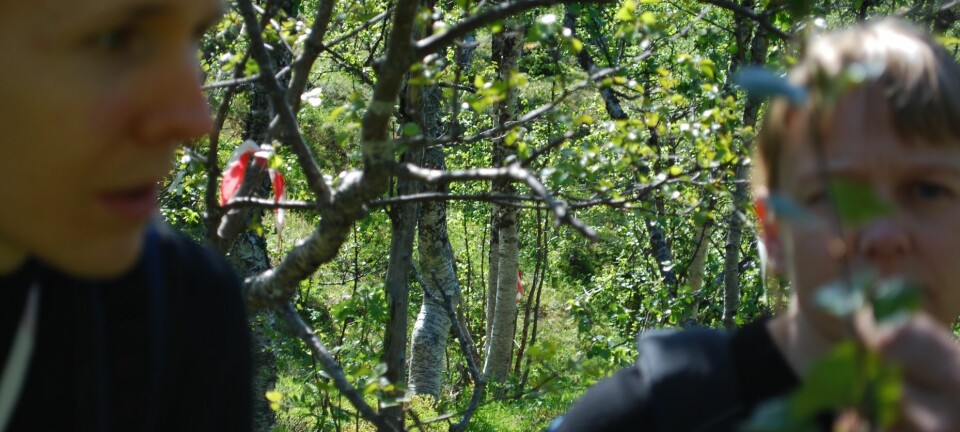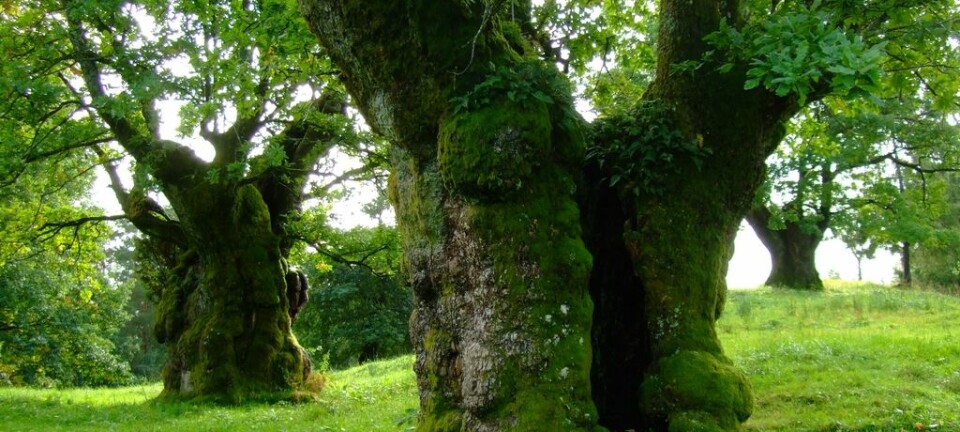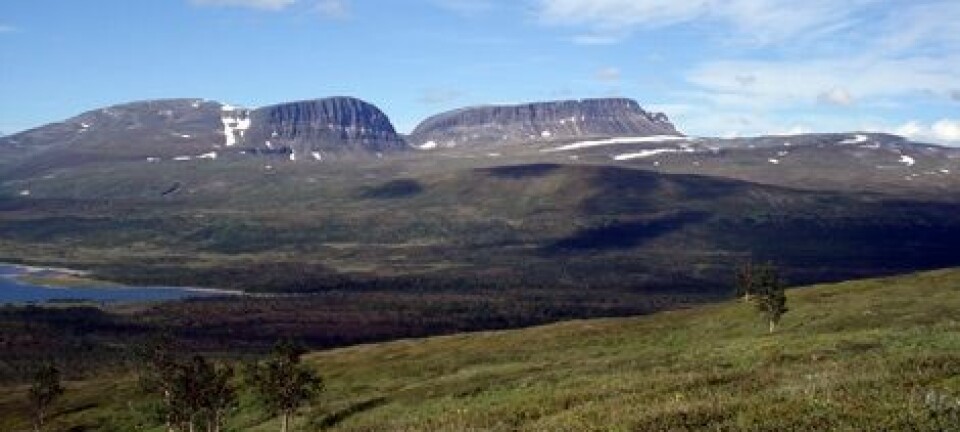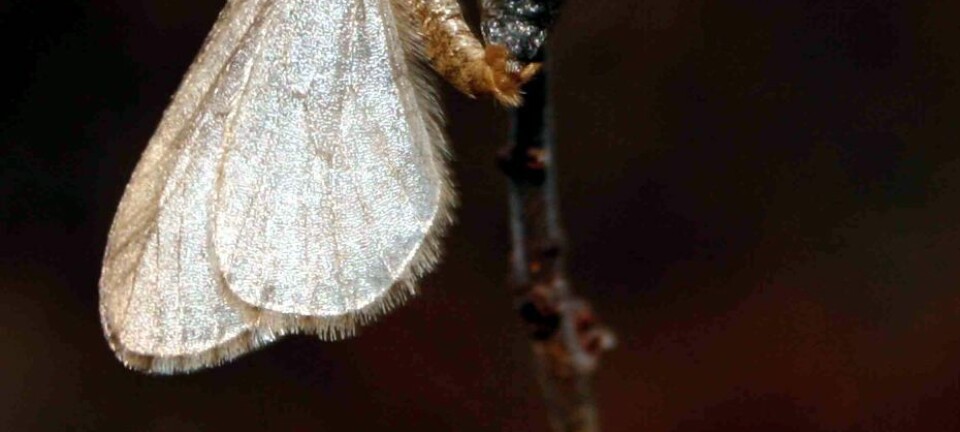This article was produced and financed by The Research Council of Norway
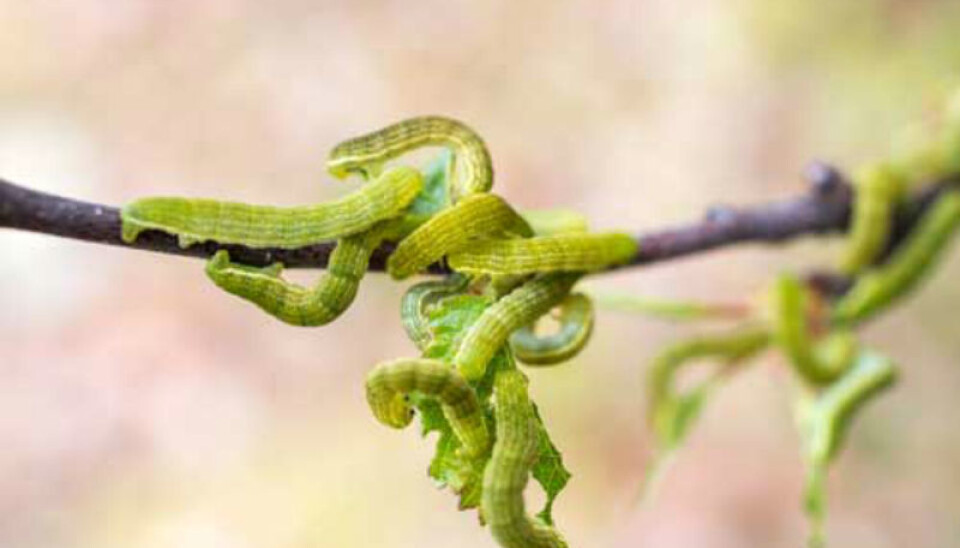
Moth invasions cause damage in the sub-arctic birch forest
In just seven years, as much as one-third of the mountain birch forest in the North Calotte region was defoliated by two moth species. Researchers now have a better understanding of what happened.
From 2002 to 2009 roughly 10,000 square kilometres of the mountain birch belt across North Norway, North Sweden and North Finland was severely damaged by moth outbreaks.
Attacked over centuries
The autumnal moth (Epirrita autumnata) has been in Northern Fennoscandia for centuries. In roughly ten-year cycles, the larvae of this moth occur in high densities, occasionally so high that it results in widespread defoliation, growth reduction and sometimes death of the birch forest.
A century ago an additional species, the winter moth (Operophtera brumata), began to appear in the north. Since then both these species have increased their outbreak ranges to include even the coldest and most continental regions. During the last 15 years a third moth species, the rare umber moth (Agriopis aurantiaria), has invaded the coastal regions of North Norway and established itself as a serious pest in the coastal birch forest. During the major outbreak of the 2000s, researchers know that all three moth species attacked the mountain-birch forest.
With funding from the Research Council of Norway’s programme Climate Change and Impacts in Norway (NORKLIMA), researchers studied the processes, scope and consequences of the destruction. They also studied the events in a context of climate change in North Norway and across the rest of the North Calotte region.
Longer-term invasion intensifies forest destruction
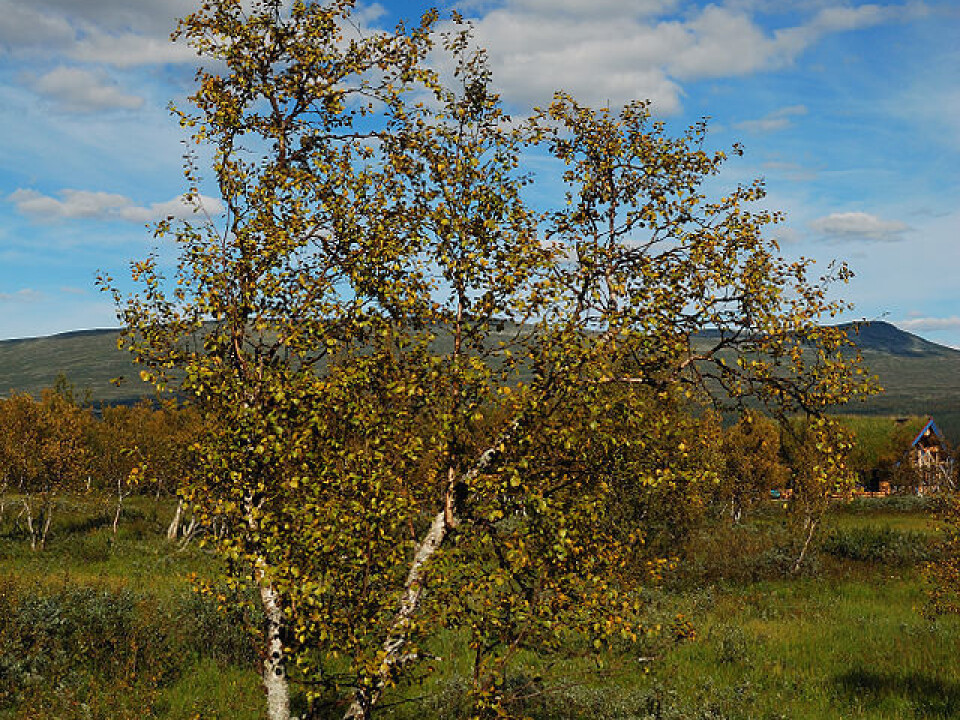
“Climate has an impact on the geometrid moth system in the north – we see clear indications that the system is changing,” says Senior Research Scientist Jane U. Jepsen of the Norwegian Institute for Nature Research (NINA).
Using satellite photography the researchers have mapped the progress of the defoliation of the forest and provided a deeper understanding of the extent and duration of the moth outbreaks, and what type of forest is most vulnerable.
“During the most recent major outbreak, the autumnal moth struck first,” continues Jepsen. “In the most severely defoliated areas an outbreak of the winter moth occurred a year or two later. So the forest was defoliated twice, in effect an unusually long-lasting attack, which resulted in more pressure on the forest compared to previous outbreaks. This explains why so many trees died.”
Changing vegetation
The researchers have also studied the impact of these moth invasions on the northern birch forest ecosystem.
On the Varanger Peninsula on the northeastern tip of Norway, they have mapped the vegetation before and after the outbreak, and across a range of outbreak severities.
They found that dense birch forests survive far better than sparse ones.
“Moth attacks in sparse woods cause extensive changes in ground vegetation – the dwarf shrub heath disappears and grass takes over,” says Jepsen.
Researchers explain this change with two phenomena: fertilisation and sunlight.
Sparse birch forests grow in nutrient-poor locations. Moth outbreaks cause large amounts of larvae excrement and dead larvae to fall to the ground, which fertilises the soil and promotes the growth of grass. The process is reinforced when the leaves disappear from the trees, allowing more sunlight to reach the ground.
Fauna changes as well
When the ground vegetation changes from heath to grass, there are impacts on the animal life.
“The small rodents such as voles and lemmings benefit from this,” says Jepsen, “while it appears that reindeer use the heavily defoliated areas less. This is based on counting of the various animal droppings. In severely defoliated areas we found increased amounts of small-rodent excrement and less from reindeer.”
Insect outbreaks mean browner sub-arctic
Several studies in recent years have pointed to the “greening” of the Arctic due to a warming climate. But this change is occurring to a greater extent in low and high-Arctic tundra areas and less so in sub-arctic forests.
In many sub-arctic forested areas, in fact, the opposite has been observed – a “browning” – as the forest becomes less green.
“We believe this may be related to increased pressure on the forest in certain areas,” explains Jepsen. “More intense insect infestation, more forest fires and increased drought pressure are probably the three largest factors causing this sub-arctic browning. We also believe these three factors may reinforce one another.”
------------
Read the Norwegian version of this article at forskning.no
Translated by: Darren McKellep







